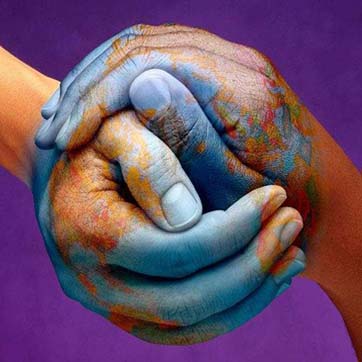End of Semester Recap
/ Perhaps one of the best parts of being a second year MBA student is getting to pick my schedule. Unlike first year, where all of the core business classes were chosen for me, as a second year student I get to decide which electives I want to take.
Not only has this been a relief (since most of the core classes were quantitative, and I am by no means a math whiz), it’s also been fun and rewarding to study topics that interest me through an MBA lens.
Perhaps one of the best parts of being a second year MBA student is getting to pick my schedule. Unlike first year, where all of the core business classes were chosen for me, as a second year student I get to decide which electives I want to take.
Not only has this been a relief (since most of the core classes were quantitative, and I am by no means a math whiz), it’s also been fun and rewarding to study topics that interest me through an MBA lens.
Unfortunately, by the end of the semester, there’s little time for anything else – including blogging. I haven’t been able to write on The Changebase for a couple of weeks precisely because I’ve been too busy wrapping up all of the projects, presentations, and papers that these electives have assigned!
But it’s been a great semester of learning, and since I’m often asked to talk about how what I study relates to my interest in CSR and sustainability, I thought I’d share a little recap.
I started out my semester with a one-week intensive course called Global Sustainability, which basically looked at issues like food and water scarcity, energy constraints, and global migration and the impacts they have on our planet. If you haven’t checked out my previous summary on this class, I recommend reading it.
The rest of my four month semester consisted of five other classes:
Government, Society and the New Entrepreneur focused on the topics of “economic globalization, environmental sustainability, international entrepreneurship, and the interplay between growth an d prosperity”. Through in-depth studies of various countries (Japan, China, India, South Africa, Saudi Arabia, Singapore, Russia and Brazil), my classmates and I gained a broad overview of how globalization impacts trade, economic growth, education, environmental conservation, and entrepreneurship around the world.
d prosperity”. Through in-depth studies of various countries (Japan, China, India, South Africa, Saudi Arabia, Singapore, Russia and Brazil), my classmates and I gained a broad overview of how globalization impacts trade, economic growth, education, environmental conservation, and entrepreneurship around the world.
Big Takeaway: While our world is more connected than ever, each country’s national interests are more divergent than ever. To solve an issue as big as climate change, for instance, world leaders must balance their responsibility to their own people with a shared responsibility to care for our global resources. Tough job for sure.
On the other end of the spectrum, Consumer Behavior focused on the attitudes, behaviors, social norms, and decision-making processes that consumers use and reference when they make purchases. For this course I worked with a team to develop a hypothetical new product (along with target consumer and marketing recommendations) for green cleaning producer Seventh Generation. Lots of primary data collection, and lots of consumer behavior theory.
Big Takeaway: The more I spoke with potential target consumers, the clearer it became that people really are wary of the “green” label. They’ve heard it so many times – and yet they still don’t really understand what it means nor do they trust its value. A clear warning sign for marketers…
My Corporate Governance seminar centered on the interplay between governance, accountability and ethics in the corporate and nonprofit sectors. Through in-depth, “governance gone wrong” case studies, we developed a framework for understanding how factors like board oversight, compensation structures, and organizational culture affect the level and type of governance at a company. This class was especially timely one year after the global financial crisis.
Big Takeaway: Much like CSR, there are varied opinions relating to the value that good governance brings to an organization. Is governance just about compliance and risk management, or does it actually add value? Are investors willing to pay more for good governance? I think (and hope) they are.
Entrepreneurial Management focused on the challenges and hurdles faced by early-stage entrepreneurs, including the identification of and access to capital, scaling growth to reach beyond the early adapter market, and building a successful team. Perhaps the most fun part of the class was serving as a consultant to a social entrepreneur who’s facing these kinds of issues right now as he builds a line of ethically-sourced footwear. Like consumer behavior, this involved lots of primary data collection and marketing recommendations.
Big Takeaway: As a social enterprise footwear company, the client I worked with wanted to “do good and do well.” Yet, the potential consumers we spoke with reminded us that it’s not just intention that matters – cause marketing campaigns need to be genuine, transparent, easy to understand, and perhaps most importantly, have an immediate and tangible impact on a meaningful cause. Not always an easy task!
Finally, one project that I started this semester and will finish in early January is a CSR Reporting Directed Study. Back in October a Fortune 300 company contacted my school to inquire about putting a team of MBAs together to evaluate their current CSR reporting – and I jumped at the chance. In order to make recommendations, my team and I have spent the semester doing a deep-dive into the Global Reporting Initiative and the Carbon Disclosure Project. We’re now just starting the recommendation phase and I’ll be sure to keep you posted.
Big Takeaway: Sustainability reporting is more than just wrapping your arms around numbers (although it’s fair to say that getting a handle on a company’s data is hard enough!). In fact, two key themes that keep coming up are transparency in information sharing and stakeholder engagement – two crucial topics that are very hard to get right and very easy to get wrong.
So all in all it’s been an incredible four months, especially compared to my first year of business school when it was so hard to “see the forest” through all that data analysis!
In the end this really was a semester of putting all of the pieces together, which is a great feeling. And now on to winter break!


